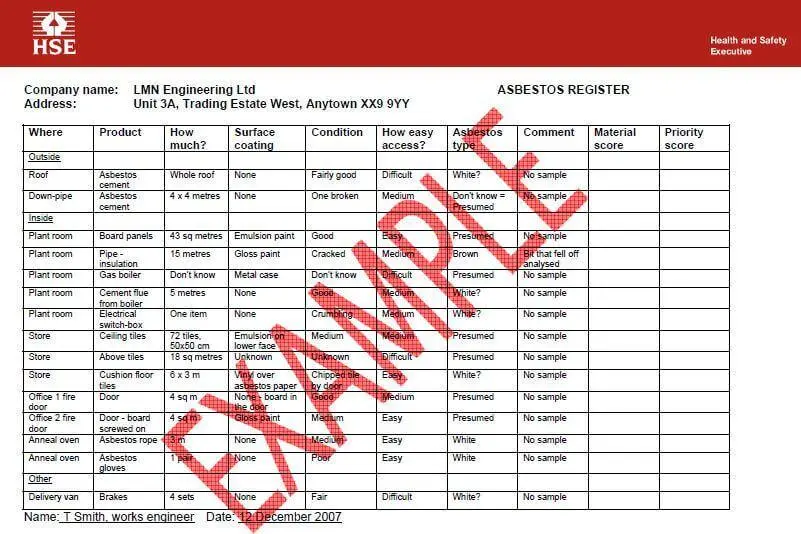· Asbestos · 4 min read
How to check for asbestos before you start groundworks
Learn how to check for asbestos before starting a construction project. We cover consulting asbestos registers, assessing building age, and hiring professionals.

If your latest project involves building a new foundation or excavating the ground, the potential for asbestos should be on your radar. There is no expectation for you to be an expert, but understanding what you should be looking out for is important. The first rule of asbestos is do not touch asbestos…or disrupt it in any way, as that’s when it becomes hazardous to your health.
Asbestos has been used in countless applications and can be difficult to recognise without getting the suspected Asbestos Containing Material (ACM) tested. The most likely places you’ll find asbestos are:
- Pipe insulation
- Spray on steel insulation
- Gaskets, seals, or ropes
- Window putty
- Mortar, concrete, and cement sheet fiber board
- Particle boards and insulation backing boards (behind radiators or circuit breakers for instance)
- Fireproof blankets or aprons/suits
- Toilet cisterns, water tanks, and other plumbing furniture
However, even unlikely materials such as mattresses and toothpaste can have asbestos if they’re old enough. So, if you cannot prove that it’s from post-2000, or that the material has already been tested and proven safe, then any material could have asbestos.
That’s why it’s important to ensure you take all the necessary steps to check for asbestos in the ground or on-site. The good news is that many of the checks happen before excavation begins. We’ve had our fair share of run-ins with asbestos and have compiled some of the key steps you should consider taking even before the digger hits the soil:
- Check the asbestos register: The first place to check for any history of asbestos on your project is the UK National Asbestos Register. It’s a database that houses all the asbestos management plans for any building constructed before 2000. The asbestos management plan is a legally required document that should be created and maintained by the duty holder (building or landowner) and is used when the building is live or currently being used. In construction situations where the asbestos is being removed, it will be called a Demolition Asbestos Register. The main purpose of both registers is to prove that an asbestos survey has been carried out by a competent and licensed professional. It also ensures that any asbestos has been documented and clearly marked, so the necessary remediation can be taken. It’s worth noting that just because there is asbestos present doesn’t mean the area is dangerous. Certain ACMs can be left in place as long as they are not likely to be disturbed, are well documented, and marked up.
- Contact the duty holder: No register for the property? You’ll need to stop all works and contact the duty holder to request an asbestos register. However, if you are the new owner of a building and there is no register, you will need to have one completed if the property was built before 2000. An asbestos ground survey will also need to be done if there is a risk that there may be asbestos (as is the case with any made ground).
- Assess the age of the building & potential asbestos: If you’ve consulted the register and it doesn’t have any documented asbestos containing material, you still need to do an assessment based on the age of the building. There’s a chance that asbestos could have been missed from the original survey, so it’s best to not assume you’re in the clear. That said, you can be confident that anything built or installed after the year 2000 is likely to be free from asbestos. You can check by reading a date plaque or sticker on the product, or by reading in the Building O&M manual to see when a fixture or fitting was installed. If you’re unable to easily find out the age of the material or when the product was installed, you need to assume it could contain asbestos.
- Consult a professional: If you’ve checked the register and searched for the date of manufacture but you’re still unable to determine if any asbestos is present, it’s time to call in the professionals. An asbestos surveyor will look over the suspect material and remove a small sample under controlled conditions to be sent to an asbestos lab. In the lab, the sample will be examined under a microscope to inspect for asbestos fibers. If fibers are found then the material will be classed as an Asbestos Containing Material (ACM), and the type of the material will be described such as Amosite or Chrysotile. Then a recommended plan of remediation will be determined to ensure you’re able to move forward with your project safely.